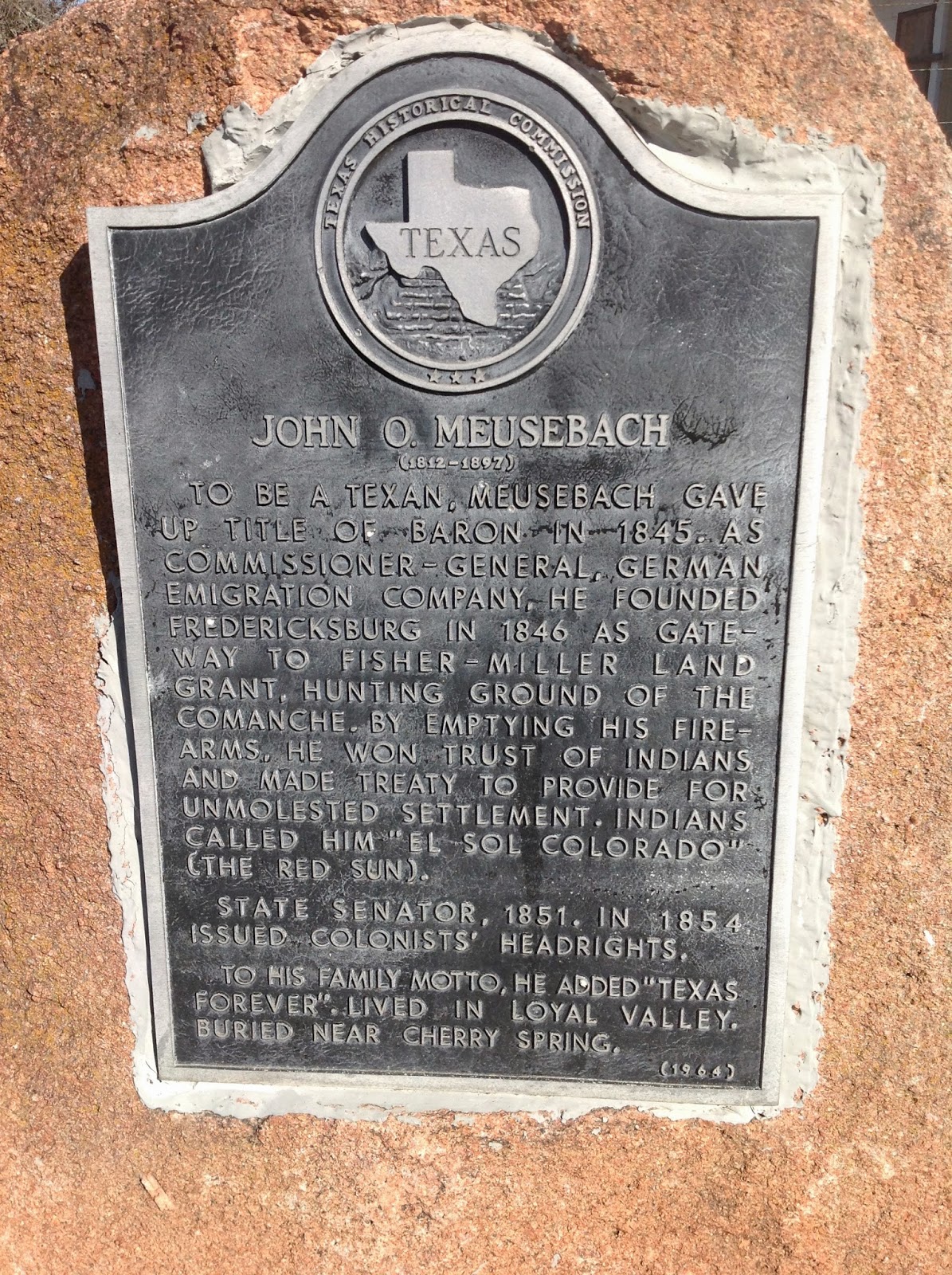Loyal Valley is another of the small German communities north of Fredericksburg settled after about 1860. You have to take the "Loyal Valley Bypass" off US 87 to visit Loyal Valley. One of its most famous
residents was Herman Lehman who was captured by the Indians when he was about 10 years old. He lived with various tribes and grew to adulthood living with the tribes. He rode, fought, killed, and raided right along with his Indian "brothers" until he was recaptured by US Army and returned to his family in Loyal Valley.
There will be another post in this blog about an Indian battle between the Commanches and US Cavalry at Silver Lake in West Texas. Herman Lehman fought alongside the Commanches in this battle against the army.
Silver Lake is about 425 miles northwest of Loyal Valley, this will give an idea of the expanse covered by the Commanches.
One of the locals told me a story that his grandfather had related about Herman Lehmann. Every year in Mason the community held a big rodeo and BBQ. Part of the festivities was for a steer to be released in the rodeo arena and Herman Lehmann dressed in Indian garb would ride out on his horse, chase the steer, and in the same style that Commanches shot buffalo he would shoot the steer with his bow and arrow. He would immediately jump off his horse, run over and gut the steer and pull out its liver and eat it.
The civilized gringo's would then use the steer for the BBQ event.
This two story house was built sometime around 1870 and was a stage stop on the San Antonio -El Paso Route.
The cemetery at Loyal Valley dates to the 1870's and is still in use by families in the area.
Willie Lehman, Herman's younger brother was about 8 years old when he was captured by the Indians. A few days later Willie was able to escape and made his way home to Loyal Valley. Willie continued to live in Loyal Valley until his death in the 1950's
Herman Lehman Headstone
From the TSHA Handbook on Texas
LEHMANN, HERMAN (1859–1932). Herman Lehmann, child captive of the Apaches, son of Moritz (Maurice) and Augusta Johanna (Adams) Lehmann, German immigrants, was born on June 5, 1859, near Loyal Valley in southeastern Mason County. His parents were married in Texas in 1849; after his father died in 1864 his mother married Philipp Buchmeier (Buchmeyer) in 1866. In May 1870, when he had never been to school and spoke only German, Herman, almost eleven, and a younger brother, Willie, were captured by raiding Apaches; two younger sisters who were with them were not taken.
Willie escaped and returned home in about nine days. Herman was adopted by his Apache captor, Carnoviste, and initiated into the rigors of primitive Indian life. He underwent harsh tribal training and initiation, became a warrior, and took part in expeditions against the Texas Rangers
qv, Comanches, Mexicans, and white settlers, ranging with the tribe from the Guadalupe Mountains in New Mexico down into the Mason County-San Saba region and into Mexico. After Carnoviste was killed and Lehmann himself had killed an Apache medicine man, he spent a year alone on the plains of West Texas before joining the Comanches, to whom he was known as Montechena (Montechina); he had also been called at various times En Da and Alamán.
With the Comanches he fought the Tonkawas and United States Cavalry, and he again took part in Indian raids. He was with the last Quahadi remnant that joined the reservation at Fort Sill. He was adopted by
Quanah Parker but was ultimately recognized as a white captive and forced to return in May 1878 to his Texas family, who had thought him dead for the eight years he lived with the Indians.
At home he refused to eat pork or sleep in a bed, and he embarrassed his family by sometimes appearing before his mother's hotel guests with his body painted, dressed only in leggings, breech clout, and feathers. He startled a revival meeting with an Indian dance, thinking the congregation was praying for rain. His brother Willie kept him from killing the neighbors' calves and hogs and from stealing horses from adjoining farms. He relearned German, learned English, engaged in numerous odd jobs, tried for a single day to attend school, and worked as a trail driver. Although he never adjusted to white society fully, Herman did accept his role in the Loyal Valley community, and his easygoing nature and good humor seem to have made him many friends. After an unhappy earlier marriage ended in divorce, he married Miss Fannie Light in 1890, and the couple had two sons and three daughters. Later, as a Comanche, he was given Oklahoma lands by the United States government, and he spent much of his time with his red brothers.
He was a local celebrity throughout the Texas Hill Country, where he gave many public exhibitions of skill at riding, roping, and archery. In later years he met many of the Texas Rangers and soldiers he had fought against as an Indian. He died on February 2, 1932, and was buried in Loyal Valley


















